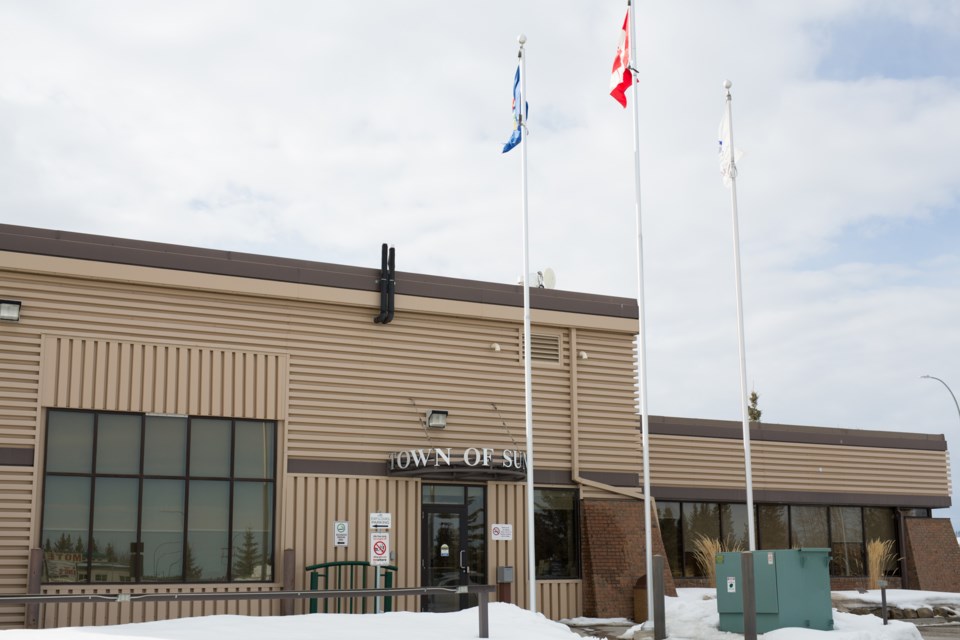SUNDRE – Council recently approved the allocation of about $110,000 to pay for an engineering study to investigate the condition of the municipality’s aging underground infrastructure.
Introducing to council during the regular March 27 meeting a request for decision to fund a long-term underground infrastructure capital replacement plan, the municipality’s director of infrastructure said the town has historically employed more of a reactive approach in response to repairing emergent issues such as waterline breaks.
“Just in the past winter, we’ve had four major water breaks,” Neil Webb told council. “Not only does this pull us away from our regular daily activities, they’re very expensive when you’re dealing with hydro vac trucks and so forth.”
The municipality’s daily water licence is capped at 2,050 cubic metres. One cubic metre of water amounts to 1,000 litres, reads a portion of background information in council’s agenda.
“There were some times that we were actually over that amount,” said Webb. “So, (Alberta) Environment really gets down on us if we’re having this trend all the time.”
The plan would be intended to help guide municipal planners along the best possible path to maintain or replace underground infrastructure in the long term, he said.
McElhanney Engineering had submitted a proposal to prepare a plan that was developed through correspondence with municipal staff and details the scope, estimated fees and schedule to complete the document. It will triage and outline priorities to replace all underground infrastructure, including water, sanitary, and storm piping as well as road rehabilitation for projects estimated to cost in the range of $1 million to $1.5 million, reads part of the background.
The process will over the following months involve the engineering firm engaging in consultations with town staff to look over historical information, said Webb.
“The pipe is our biggest concern right now, especially in the water side,” he said, adding there are a number different types of pipe that have been used over the years, with one instance in particular causing issues that were further compounded by improper installations.
“There’s a lot of gravel, and some of the bedding that the original piping was put into that I’ve seen wasn’t even put in properly,” he said.
“So, you have a lot of shifting of the pipe when it gets really cold and the frost drives down. That’s probably why we had as many water line breaks, I feel, as we did this past winter.”
Concluding his presentation, Webb said administration sought council’s approval to green light McElhanney’s proposal to develop the plan with funding in the amount of $110,000 to be drawn from the general corporate stabilization reserve account.
Coun. Todd Dalke inquired about equipment the municipality had acquired six years ago “to help document and trace pipes underground to know if it was a two-inch or four-inch, when it was installed and its lifespan. Has this changed?”
Following up with a second question, the councillor also asked if there was a reason why the municipality couldn’t develop its own plan in-house.
“What do they do for that $110,000; are they digging up, are they scanning, or is it just going through paperwork?” Dalke asked.
“Essentially, there is a lot of investment in time,” replied Webb, adding the process will involve meetings with staff to identify historical issues.
“They’re really picking our brains to see what we have done in the past. Some of those pipes will be brought up and documented,” he said, adding the engineers will also be investigating the integrity of the pipes.
“There’s also CCTV work that they would do,” he said, adding that among three options presented by the engineers was for the consultant to conduct CCTV studies on all of the town’s lines.
“But the cost was really high, so we took the lowest cost approach and said let’s defer the CCTV work until we have a more robust discussion with council saying this is the area we all agree on,” he said.
Coun. Jaime Marr asked whether the municipality did not currently have a capital geographic information system (GIS) of underground infrastructure it could provide the engineers, or if the town does have such mapping but that it’s out of date and must be brought up to speed through the engineers.
The town’s water operator does have access to a GIS, Webb answered.
“But it’s really ad hoc. So, as he comes and fixes things, he updates some of this GIS,” he said. “But in the whole project scope, it’s very small in the big picture.”
Furthermore, he said the plan will better help administration to prepare future budgets by having a guiding document that is currently not available.
“We want to get away from just putting Band-Aid solutions on these pipes,” he said. “They really add up.”
Recalling past conversations on identifying leaks during his time as a councillor, mayor Richard Warnock said that effort did not seem successful and sought to confirm that’s why the proposed plan was considered necessary, which Webb confirmed.
Speaking in favour of the motion, the mayor – who sits on the Red Deer River Municipal Users Group’s executive committee and board of directors – said water conservation regularly comes up as a topic of discussion.
“We are not the only ones that are having major water leaks; all over the Red Deer River basin, there has been some serious issues,” he said.
The motion carried with Dalke opposed.



